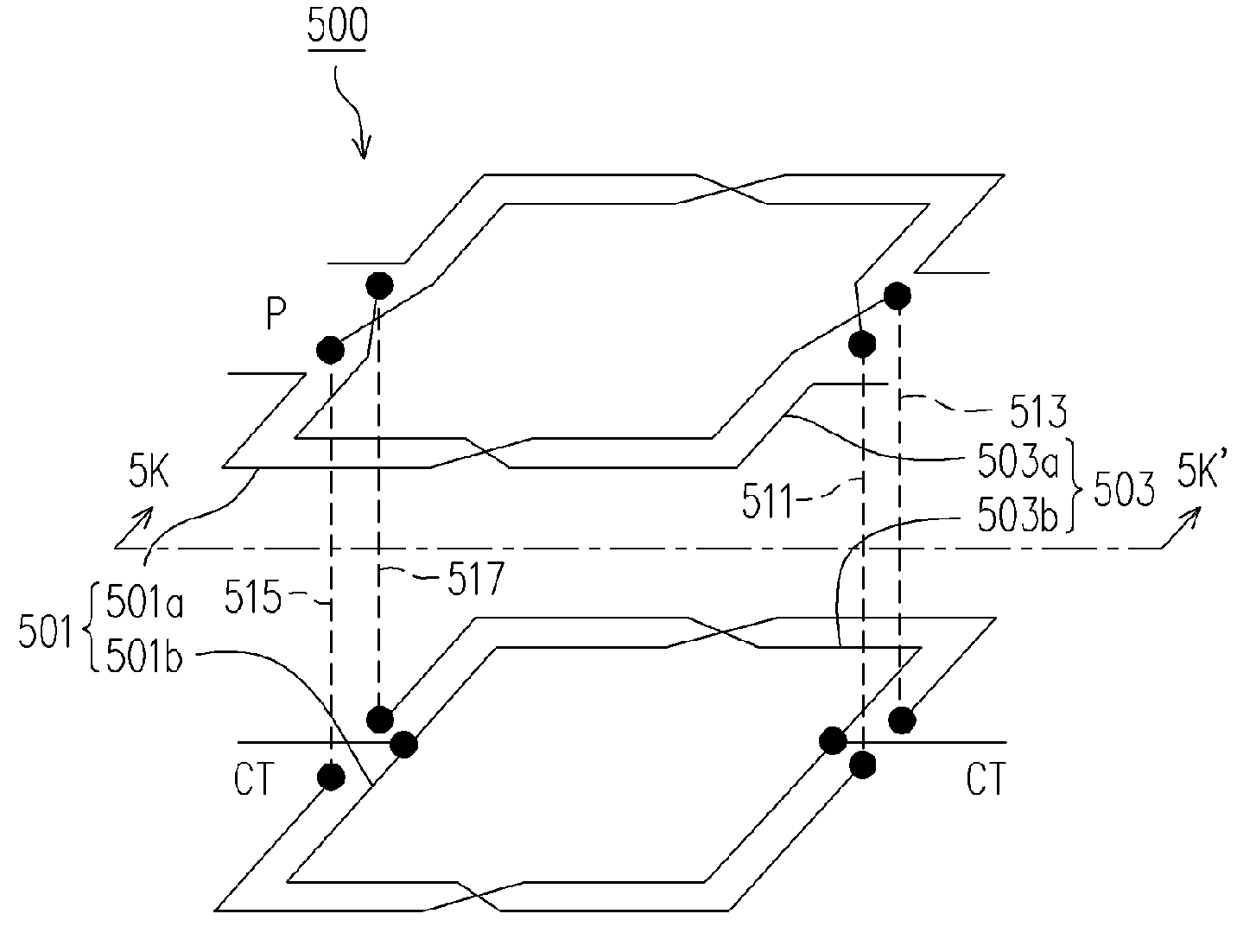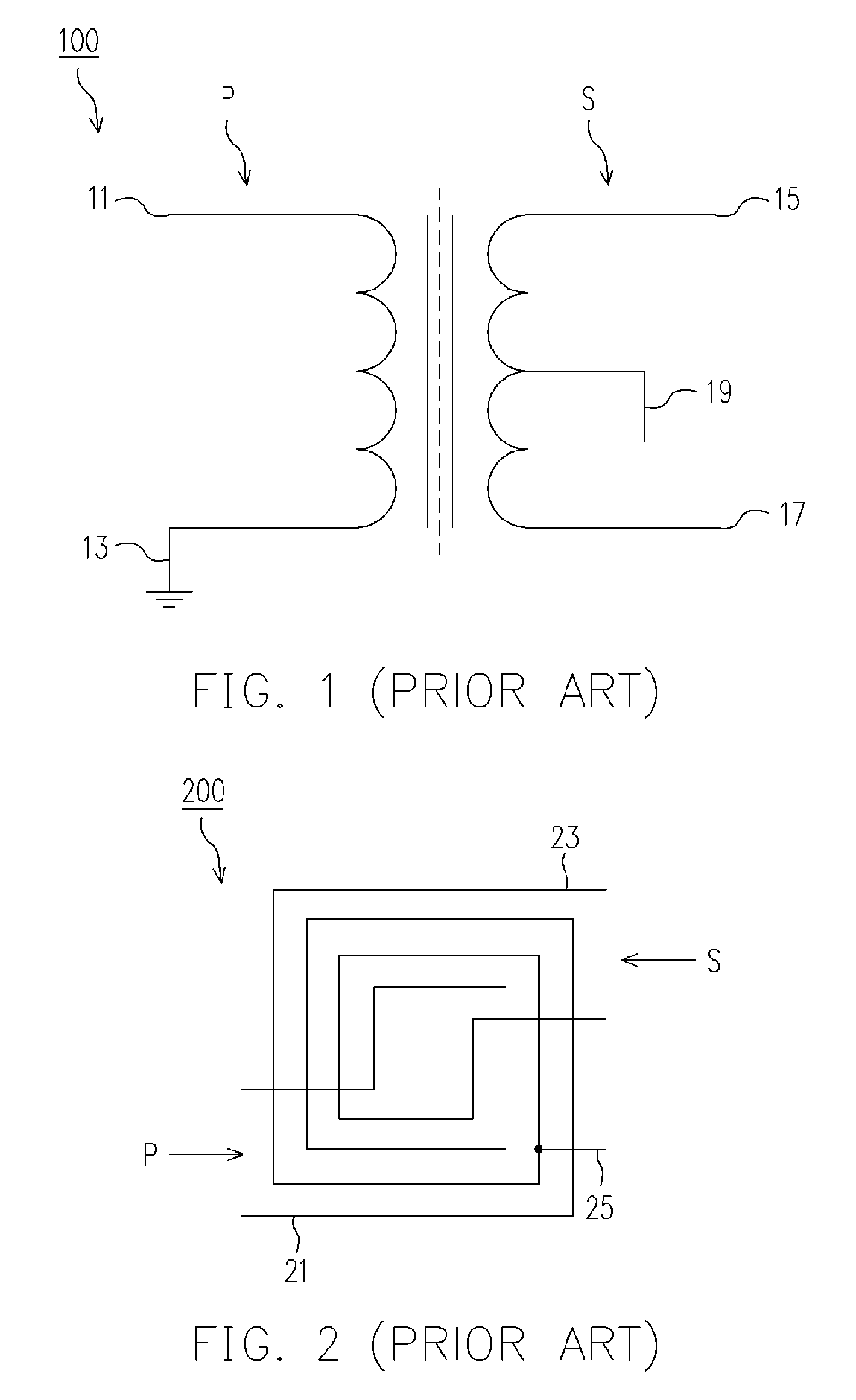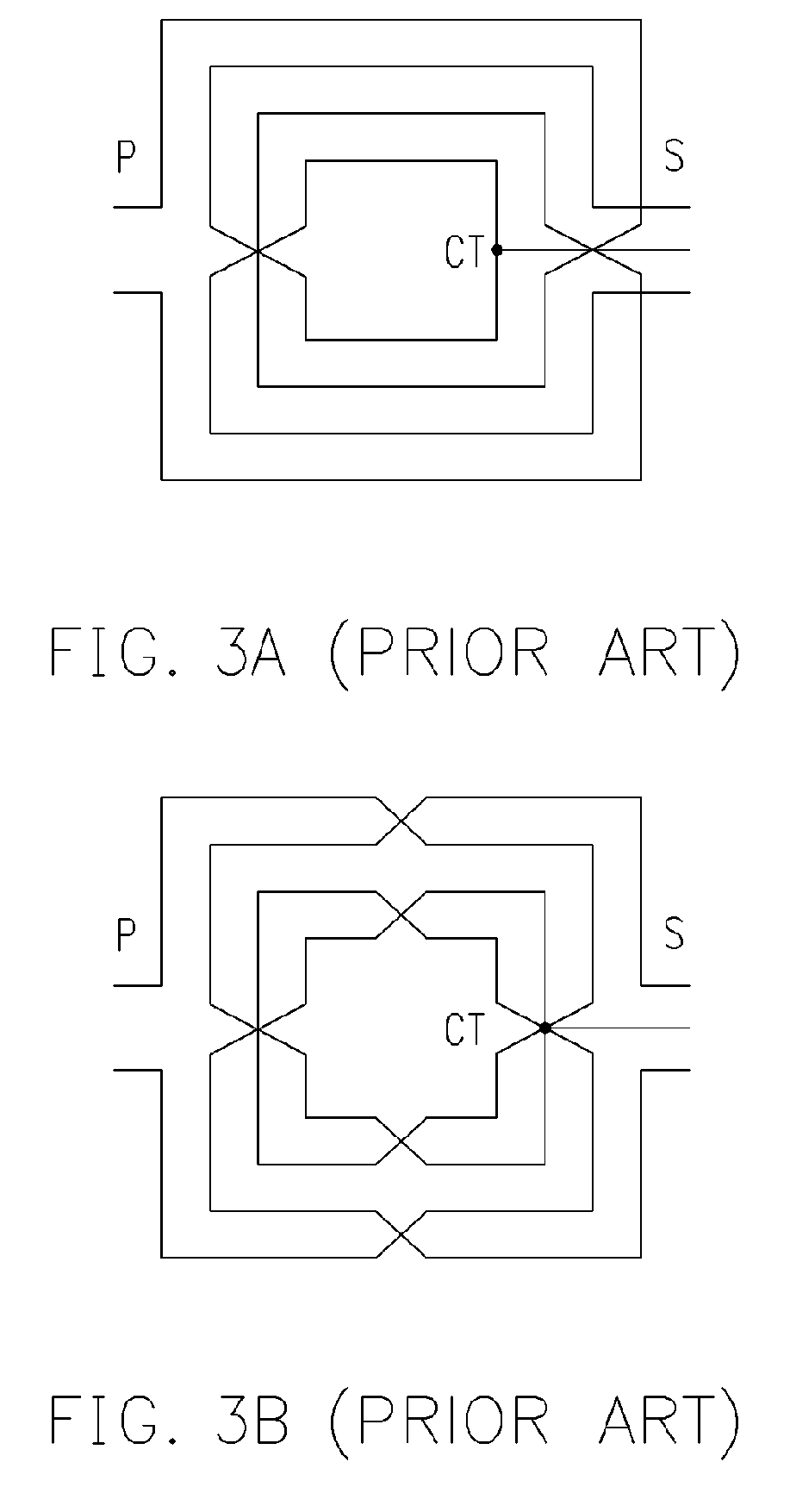Integrated transformer with stack structure
a stack structure and integrated transformer technology, applied in the direction of transformer/inductance details, transformer/inductance coil/winding/connection, inductance, etc., can solve the problems of difficult control of electrical characteristics of balun transformer b>400/b>, only determining the location of the center tap b>25/b>, and achieving the effect of easy determination of the center tap location
- Summary
- Abstract
- Description
- Claims
- Application Information
AI Technical Summary
Benefits of technology
Problems solved by technology
Method used
Image
Examples
first embodiment
[0037
[0038]FIG. 5A is a schematic drawing showing a 3-D integrated transformer with a stack structure according to the first embodiment of the present invention. FIG. 5B is a cross sectional view of the integrated transformer with a stack structure along 5K–5K′ in FIG. 5A. Referring to FIGS. 5A and 5B, the integrated transformer 500 comprises a first winding 501 and a second winding 503. Wherein, portions of the first winding 501 and the second winding 503, 501a and 503a, respectively, are disposed over the surface of the middle dielectric layer 505b. The other portions 501b and 503b are over the surface of the bottom dielectric layer 505a. In addition, in order to form a symmetric pattern within and between these windings, the top portion 501a of the first winding 501 crosses over the top portion 503b of the second winding 503, and the same applies to the bottom portion 501b of the first winding 501 and the bottom portion 503b of the winding 503. These two windings lie reversed in ...
second embodiment
[0050
[0051]FIG. 6 is a top view of an integrated transformer with a stack structure according to the second embodiment of the present invention. Referring to FIG. 6, the portion 610 is equivalent to the surface portion of the middle dielectric layer 505b in FIG. 5B. The portion 620 is equivalent to the surface of the bottom dielectric layer 505a. The structure of the integrated transformer in the present embodiment can refer to the first embodiment and detailed descriptions are not repeated.
[0052]In FIG. 6, the numbers of coils on portions of 610 and 620 of the primary side P can be of even numbers, such as 2, 4, 6, . . . etc. Accordingly, the total number of the coils on the primary side P is 4, 8, 12, . . . etc. Similarly, the secondary side S has the same structure and detailed descriptions are not repeated.
third embodiment
[0053
[0054]FIG. 7 is a top view of an integrated transformer with a stack structure according to the third embodiment of the present invention. Referring to FIG. 7, the portion 710 is equivalent to the surface portion of the middle dielectric layer 505b in FIG. 5B. The portion 720 is equivalent to the surface of the bottom dielectric layer 505a. The structure of the integrated transformer can refer to the first embodiment and detailed descriptions are not repeated.
[0055]In FIG. 7, the numbers of coils on portions of 710 and 720 of the primary side P can be multiples by 1.5, such as 1.5, 3, 4.5, . . . etc. Accordingly, the total number of the coils on the primary side P is 3, 6, 9, . . . etc. Similarly, the secondary side has the same structure and detailed descriptions are not repeated.
PUM
| Property | Measurement | Unit |
|---|---|---|
| conductive | aaaaa | aaaaa |
| impedance | aaaaa | aaaaa |
| voltage | aaaaa | aaaaa |
Abstract
Description
Claims
Application Information
 Login to View More
Login to View More - R&D
- Intellectual Property
- Life Sciences
- Materials
- Tech Scout
- Unparalleled Data Quality
- Higher Quality Content
- 60% Fewer Hallucinations
Browse by: Latest US Patents, China's latest patents, Technical Efficacy Thesaurus, Application Domain, Technology Topic, Popular Technical Reports.
© 2025 PatSnap. All rights reserved.Legal|Privacy policy|Modern Slavery Act Transparency Statement|Sitemap|About US| Contact US: help@patsnap.com



